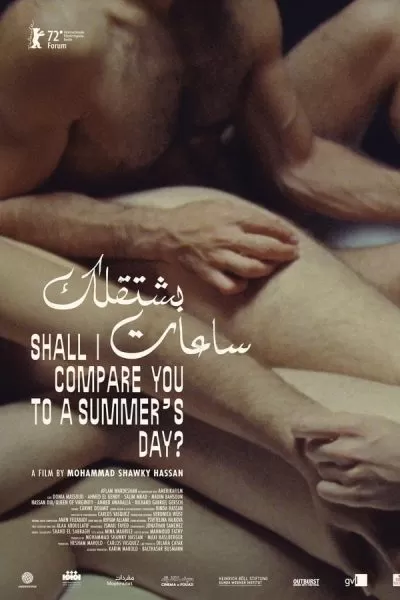Introduction:
“Bashtaalak sa’at (Shall I Compare You To A Summer’s Day?)” isn’t your typical film—it’s a fever dream, a kaleidoscope of queer Arab love, and a defiant celebration of stories rarely told on screen. Directed by Mohammad Shawky Hassan, this experimental musical documentary weaves together myth, memory, and desire, drawing inspiration from the tales of One Thousand and One Nights. Imagine Shakespeare’s poetry colliding with the pulse of Cairo’s underground, all set to a soundtrack that swings between Egyptian pop and the raw confessions of lovers. It’s bold, it’s messy, and it’s unlike anything I’ve seen before.
Review:
From the very first frame, I could tell this film wasn’t going to play by the rules. The screen bursts with color—almost like someone spilled a box of crayons across the set—and the boundaries between reality and fantasy blur until you’re not sure what’s real and what’s just wishful thinking. It’s dizzying, honestly, but in a way that makes you want to lean in closer, not look away.
At its heart, “Bashtaalak sa’at” is a love story—or maybe a tangle of love stories. The film follows a group of men navigating the tricky waters of a polyamorous relationship in today’s Arab world. There’s no neat beginning, middle, and end here. Instead, we get a patchwork of moments: a glance that lingers a second too long, a smile that sparks something electric, a rendezvous that could be the start of everything or nothing at all. The film is a bit like eavesdropping on a party where everyone’s talking at once—sometimes you catch a thread of longing, sometimes you’re lost in the noise.

What really struck me was how the film refuses to give us straightforward answers. Conversations twist and turn, sometimes dissolving into monologues or melting into song. We hear confessions about hookups, heartbreaks, and the endless search for connection. There’s a kind of vulnerability here that feels raw and honest, even when the storytelling gets tangled. I found myself thinking, “Isn’t this what love feels like sometimes? Messy, confusing, impossible to pin down?”
Visually, the film is a feast. Green screens transform the world into a surreal playground—one moment we’re in a neon-lit club, the next we’re drifting through a homoerotic fantasy of mermen and drag queens. There’s a sense of playfulness, but also a deep ache, especially in a monologue addressed to a lost lover. The film isn’t shy about sex, either. It dives headfirst into desire, sometimes with a wink (hello, campy porn scenarios), sometimes with a tenderness that caught me off guard.
And yet, for all its beauty and boldness, I couldn’t shake the feeling of being a little lost. The narrative is so fragmented that I found myself grasping for something solid to hold onto. There were moments when I wondered, “Why was this made? Who is it for?” But then a song would swell, or a glance would speak volumes, and I’d be pulled right back in. Maybe that’s the point—maybe the film wants us to surrender, to let go of needing everything to make sense.
What really hit home for me was how universal these stories felt, even as they were steeped in Egyptian and Lebanese culture. The parties, the self-doubt, the longing for connection—it’s all so familiar, even if the language and the music are different from what I grew up with. There’s something revolutionary about seeing queer Arab love celebrated so unapologetically, with all its joy and heartbreak.
I’ll be honest: this film isn’t for everyone. It’s challenging, sometimes frustrating, and definitely not the kind of thing you can half-watch while scrolling on your phone. But if you let yourself sink into its world—if you let the music, the colors, the chaos wash over you—you might just find something beautiful. I know I did, even if I’m still not sure I understood it all. Isn’t that what art is for, anyway? To leave us a little breathless, a little bewildered, and a little more alive.







The description of the film’s color palette as ‘spilled crayons’ stuck with me—it perfectly echoes that chaotic blend of myth and modernity. I’m intrigued by how it borrows from One Thousand and One Nights structure to frame queer intimacy, something that feels both ancient and radically new. Would love to hear more about the polyamorous dynamics they hinted at, though.